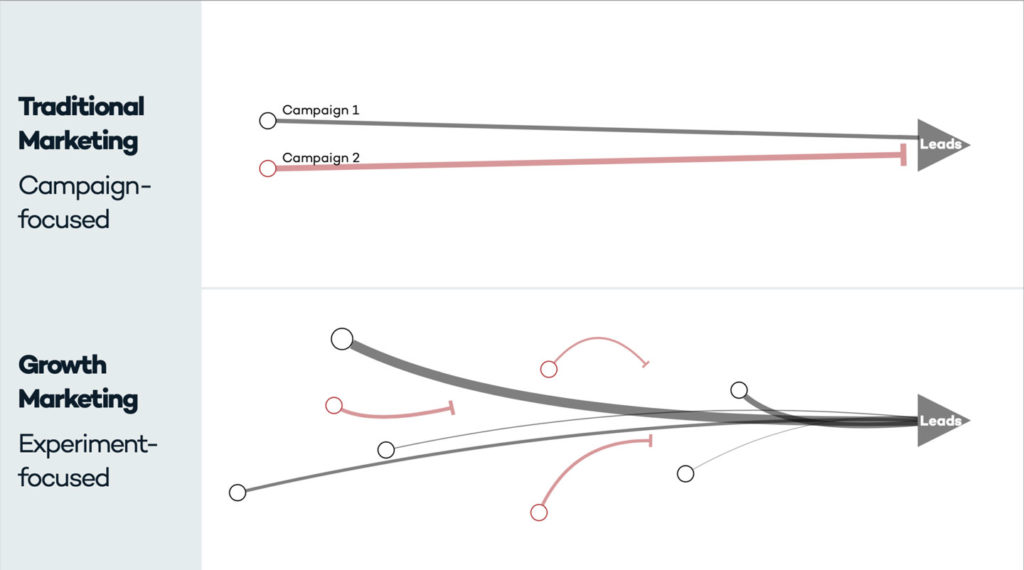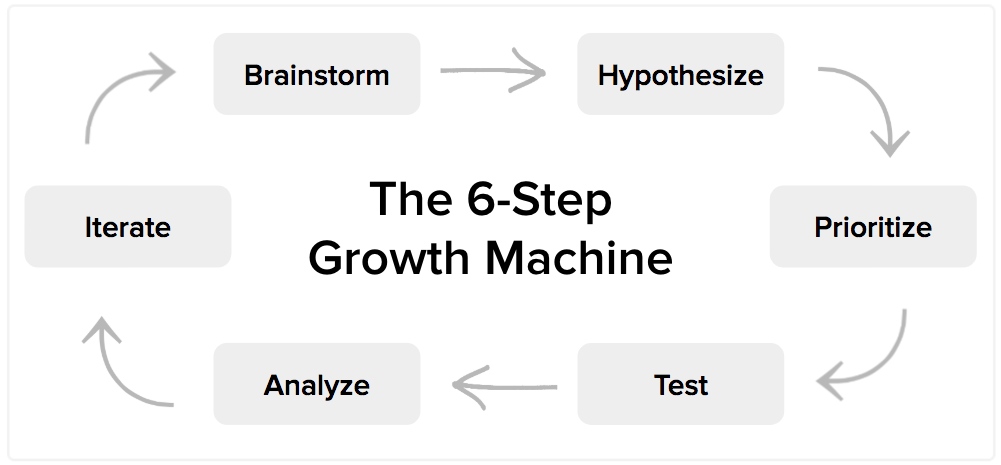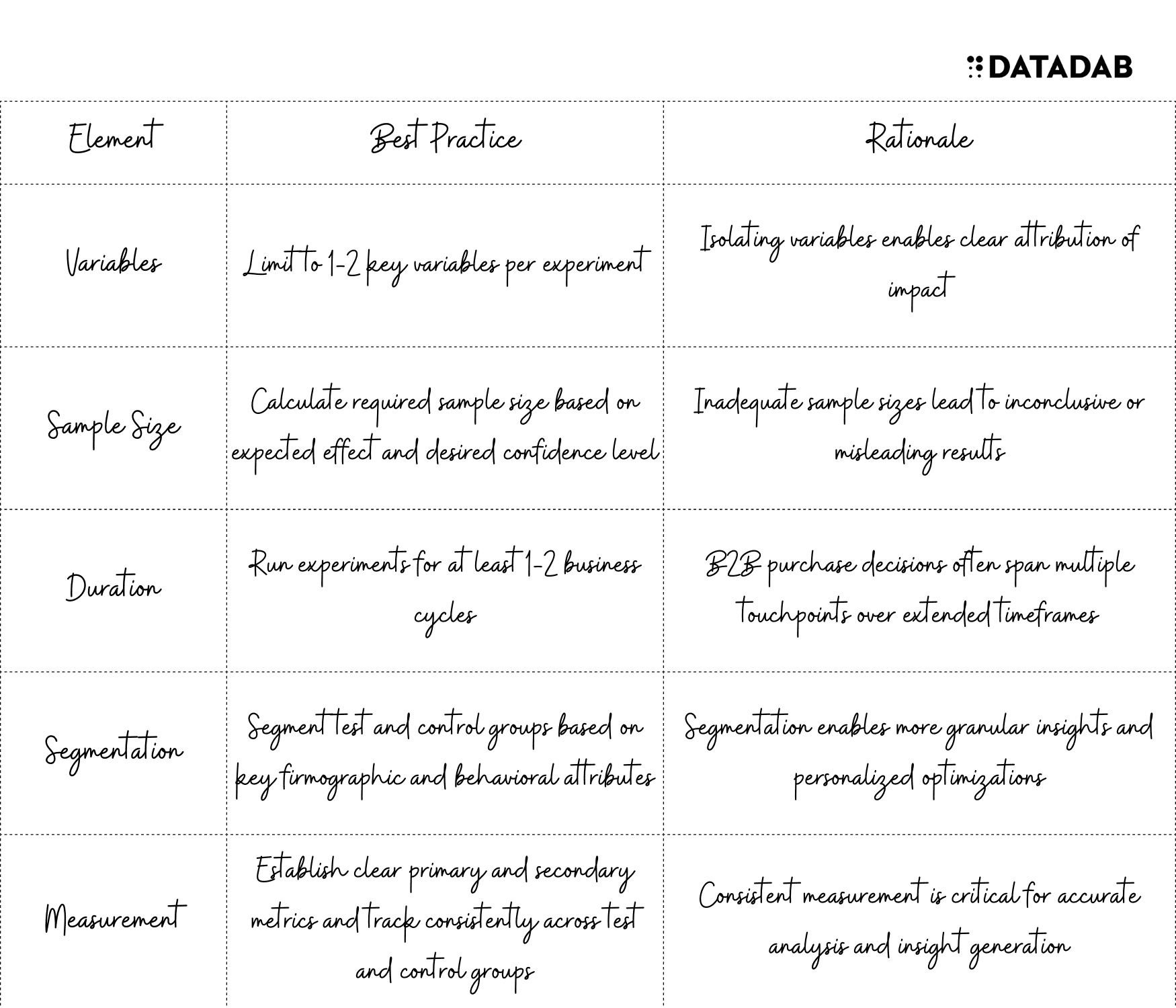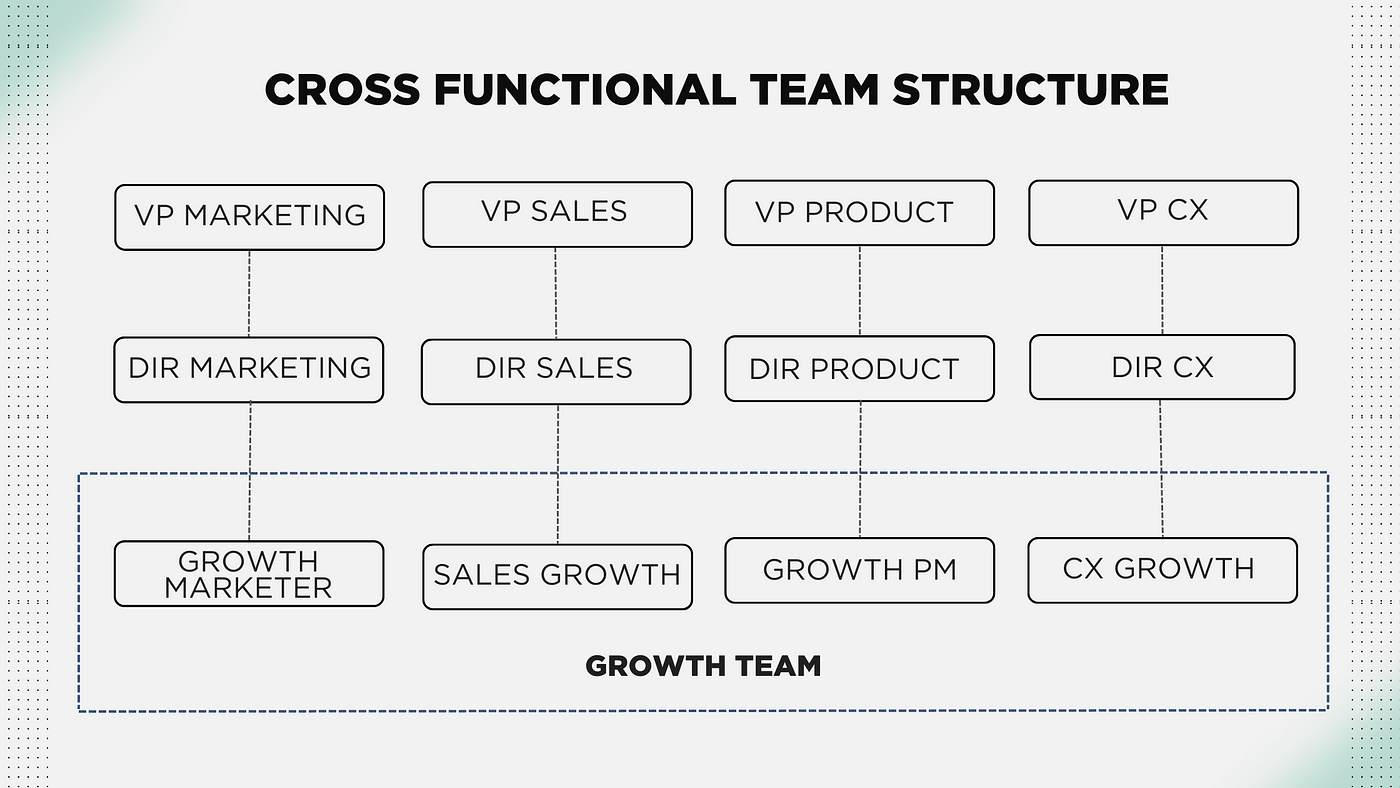Is your B2B marketing strategy based on opinions or evidence? In today's competitive landscape, gut instinct is no longer enough. To stay ahead, leading organizations are embracing a culture of experimentation and continuous optimization. But what does this look like in practice, and how can you apply these principles in complex B2B environments?
In this playbook, we'll share proven strategies and real-world examples from our agency's work driving measurable growth for B2B clients. You'll learn how to design and execute high-impact experiments, overcome common pitfalls, and foster a culture of experimentation across your organization. Let's dive in.

What Is a B2B Growth Experiment?
A growth experiment is a structured test designed to validate or invalidate a specific hypothesis about how to drive incremental business value. In B2B marketing, this could mean testing anything from new ad creative to sales collateral to pricing models. The key is starting with a clear, measurable goal and designing a controlled experiment to isolate the impact of the variable being tested.
Why is this approach so critical in B2B? With longer sales cycles, multiple stakeholders, and high-consideration purchases, B2B marketers can't afford to make decisions based on hunches. Experimentation allows you to de-risk your strategies and invest resources in the tactics proven to deliver results.

The Anatomy of a Successful B2B Growth Experiment
While every experiment is unique, there are some key components that set winning tests apart:
Clear goals and hypotheses: Start by defining the specific metric you're trying to improve and articulating a testable hypothesis for how to move the needle.
Thoughtful experiment design: Determine the minimum viable test to validate your hypothesis while controlling for external variables. Consider factors like sample size, randomization, and selection of an appropriate control group.
Disciplined measurement: Establish clear success criteria upfront and diligently track results throughout the experiment. Be sure you're capturing both quantitative and qualitative insights.
Actionable insights: The goal of any experiment is to generate learnings you can apply to optimize future performance. Document and socialize results with key stakeholders to drive alignment on next steps.

To bring this to life, let's look at a case study from our work with a leading B2B software provider.

Case Study: Optimizing Free Trial Conversion
One of our past clients, a log management company LOGIQ.AI struggled with converting free trial users into paid subscribers. The marketing team hypothesized that reducing friction in the sign-up process would boost conversion.
To test this hypothesis, we designed an A/B test comparing the existing sign-up flow with a streamlined version eliminating two fields. We ran the test for 4 weeks with a sample of 10,000 trial users to reach statistical significance.
The results were dramatic: the streamlined flow increased free-to-paid conversion by 18% and generated an incremental $1.2M in annual recurring revenue. By making a data-driven decision to permanently implement the winning variant, LOGIQ.AI saw a step-change improvement in a critical business metric.

Nuances of B2B Growth Experimentation
While the principles of experimentation are universal, B2B marketers must account for some unique considerations:
Longer timelines: B2B purchase cycles often span months or even years. Experiments must be designed with patience and realistic impact timelines in mind.
Multiple influencers: Buying decisions often involve 6+ stakeholders. Experiments should factor in the full range of audience needs and behaviors.
Account-level insights: In addition to individual leads, account-level engagement is critical. Consider firmographic data in your test design and analysis.
Sales handoffs: Marketing experiments can't happen in a vacuum. Collaborate closely with sales to understand frontline realities and downstream impact.
By proactively addressing these nuances, you can ensure your experiments drive meaningful results in a B2B context.
![How To Plan & Keep Track Your Growth Experiments [Best Practices] - Grow with Ward](https://growwithward.com/wp-content/uploads/2019/03/Ranking-growth-hacking-experiment-backlog-BRASS-PIE-ICE-score.png)
Prioritizing Growth Experiments for Maximum Impact
One of the biggest challenges facing B2B growth teams is deciding what to test first. With no shortage of ideas and limited resources, it's critical to prioritize experiments based on potential value and feasibility.
| Dimension | Low | Medium | High |
|---|---|---|---|
| Impact | Minimal impact on key metrics | Moderate impact on key metrics | Significant impact on key metrics |
| Confidence | Limited evidence to support hypothesis | Some evidence to support hypothesis | Strong evidence to support hypothesis |
| Ease | Requires significant resources or dependencies | Moderate effort required | Can be executed quickly with minimal dependencies |
We recommend scoring experiment ideas across three dimensions:
- Impact: How significantly will this experiment move the needle on our target metric(s) if successful?
- Confidence: How strong is our evidence that this experiment will generate the desired result?
- Ease: How quickly can we design, launch, and analyze results from this experiment given dependencies and resources?
By plotting ideas on these axes, you can focus on the experiments that balance high probability of success with material upside for the business. Importantly, this is not a “set it and forget it” exercise - your prioritization should evolve based on learnings from past tests.

Assembling the Right Stakeholders
No marketing experiment happens in isolation. To generate buy-in and translate insights into action, B2B growth leaders must engage colleagues across the organization. Some key players to involve:
Sales leadership: Collaborate on defining success metrics, interpreting qualitative feedback, and rolling out winning tactics to the frontline.
Product management: Validate product assumptions, share learnings on user behavior, and translate insights into the product roadmap.
Executive sponsors: Secure upfront buy-in on goals and resources, provide progress updates, and showcase wins to build political capital.
Finance: Align on resourcing needs, define success metrics, and model bottom-line impact of experiment results.
| Stakeholder | Role |
|---|---|
| Marketing | Designs and executes experiments, analyzes results |
| Sales | Provides frontline feedback, helps validate hypotheses |
| Product | Incorporates learnings into product roadmap, supports technical implementation |
| Executive | Sets strategic direction, secures resources, removes roadblocks |
| Finance | Validates business impact, manages budget and ROI expectations |
In large, matrixed organizations, it's also essential to designate a clear owner for each experiment to drive execution and accountability. Many teams choose to appoint a dedicated “experiment lead” to manage stakeholder alignment, quality control, and insight socialization.

Avoiding Common Pitfalls
Even the most well-designed experiments can go off the rails. Some common mistakes we see B2B growth teams make:
Testing too many variables at once: It's tempting to “kitchen sink” your first experiments, but too many moving pieces make it impossible to isolate what's working. Limit each test to 1-2 key variables.
Underpowering tests: Small sample sizes and inadequate experiment lengths often lead to inconclusive results. Do the math upfront to ensure your test has sufficient statistical power.
Overindexing on quantitative data: While the “numbers don't lie,” qualitative insights are critical for understanding the why behind the what. Balance hard data with user research and anecdotal feedback.
Chasing tactical optimizations: It's easy to get caught in the weeds A/B testing minor UX or copy tweaks. Make sure experiments always tie to strategic business objectives.
Shying away from failure: Not every experiment will generate a win - in fact, most won't! Create psychological safety for “failed” tests and socialize learnings to keep your team hungry.
By proactively monitoring for these pitfalls, you can save time, money, and frustration while generating more reliable results.

Building a Culture of Experimentation
Ultimately, experimentation is more than a set of processes and tools - it's a mindset. The most successful B2B organizations don't just run one-off tests, but embrace experimentation as a core operating principle.
| Category | Key Performance Indicators |
|---|---|
| Velocity | - Number of experiments launched per month/quarter - Average time from hypothesis to insight - Percentage of experiments completed on schedule |
| Quality | - Percentage of experiments with statistically significant results - Percentage of winning variants implemented - Stakeholder satisfaction with experiment insights |
| Impact | - Incremental revenue generated from winning experiments - Improvement in key funnel metrics (e.g. conversion rate, average deal size) - Organizational adoption of experimentation insights |
| Efficiency | - Average cost per experiment - Return on investment (ROI) of experimentation program - Percentage of experiments leveraging existing tools and resources |
Some hallmarks of a true experimentation culture:
Executive advocacy: Senior leaders publicly embrace experimentation and accept “failures” as a necessary part of the learning process.
Democratized ideation: Experiment ideas aren't limited to the growth team, but sourced from across the organization. Front-line sales reps and customer success managers are often wellsprings of insight.
Transparent communication: Learnings from experiments are proactively documented and socialized across teams. There are regular forums for celebration of both wins and “productive failures.”
Continuous optimization: Experiments aren't one-and-done efforts, but part of an ongoing process of identifying new opportunities, testing, and iterating based on results.
Incentive alignment: Teams are recognized and rewarded not just for shipping new tactics, but for rigorously validating impact and rapidly iterating based on market feedback.
Tactically, embedding experimentation often starts with a “lighthouse” project - a high-profile, cross-functional experiment that showcases the value of the approach. By starting small and notching an early win, you can generate momentum and secure resources to scale your program.

The Road Ahead
We believe growth experimentation is the future of B2B marketing - and that future is already here. Forward-thinking teams are leveraging experiments not as a tactic, but as a source of sustainable competitive advantage.
But realizing this potential requires more than a new set of KPIs or an A/B testing tool. It demands a fundamental rewiring of how marketing teams operate and collaborate. It requires a willingness to challenge assumptions, embrace uncertainty, and let the market - not org charts or HiPPOs - determine where to invest.
The playbook and principles we've covered here offer a roadmap for any B2B marketer looking to start or accelerate their experimentation journey. But the specifics of your program must be tuned to the unique dynamics of your market, customers, and organization.
Our firm specializes in helping B2B organizations design, execute, and scale high-impact growth experiments to drive step-change results. To learn more about how we can support your journey, get in touch for a free consultation.
Your buyers are speaking. Are you ready to listen?
FAQ
1. What is a growth experiment in the context of B2B marketing?
A growth experiment is a structured test designed to validate or invalidate a specific hypothesis about how to drive incremental business value, such as testing new ad creative, sales collateral, or pricing models.
2. Why is experimentation critical for B2B growth?
Experimentation allows B2B marketers to make data-driven decisions, de-risk strategies, and invest resources in tactics proven to deliver results, rather than relying on intuition or best practices alone.
3. How does B2B experimentation differ from B2C or e-commerce experimentation?
B2B experimentation must account for longer sales cycles, multiple stakeholders, account-level dynamics, and the need for close collaboration between marketing and sales teams.
4. What are the key components of a successful B2B growth experiment?
A successful B2B growth experiment includes clear goals and hypotheses, thoughtful experiment design, disciplined measurement, and actionable insights that can be used to optimize future performance.
5. How can I prioritize growth experiment ideas?
Prioritize growth experiments based on three key factors: potential impact on key metrics, confidence in the hypothesis based on available evidence, and ease of implementation given available resources and dependencies.
6. Who are the key stakeholders to involve in B2B growth experiments?
Key stakeholders for B2B growth experiments include marketing leaders, sales leadership, product management, executive sponsors, and finance partners.
7. What are some common pitfalls to avoid in B2B growth experiments?
Common pitfalls to avoid include testing too many variables at once, underpowering tests with insufficient sample sizes, over-indexing on quantitative data while neglecting qualitative insights, and chasing tactical optimizations rather than strategic objectives.
8. How can I foster a culture of experimentation within my B2B organization?
To build a culture of experimentation, secure executive buy-in, democratize ideation and insight sharing, celebrate both wins and “productive failures,” and align incentives and recognition with experimentation outcomes.
9. What tools and technologies are essential for B2B growth experimentation?
Essential tools for B2B growth experimentation include A/B testing platforms, analytics solutions, user research tools, and data visualization software.
10. How can I measure the success and impact of my B2B experimentation program?
Measure the success of your experimentation program using KPIs such as experiment velocity, win rate, revenue impact, and insight-to-action rate, as well as qualitative feedback from key stakeholders.


